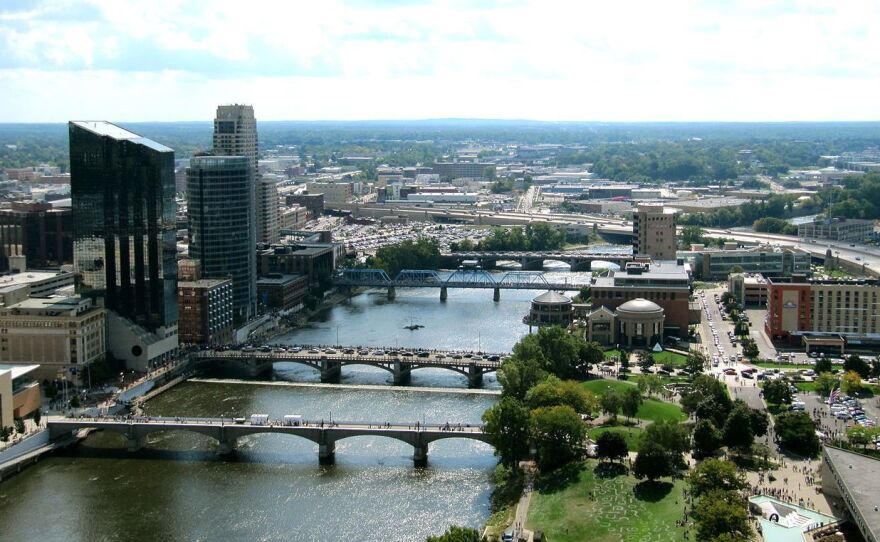The summer season is beginning, and with it comes river recreation of all kinds in the Roaring Fork Valley. In our area, we’re used to roaring rivers and thrilling rapids. But, in other communities, rivers that once roared are still and quiet now. And, it’s a problem. An engineering firm in Glenwood Springs is working to put the rapids back in rivers damaged by human intervention. Aspen Public Radio’s Marci Krivonen has more.
It’s easy to find rushing rapids this time of year. Just a short walk from downtown Aspen, the Roaring Fork River is flowing fast as snow melts in the mountains nearby.
Downriver, in Glenwood Springs, a group of water engineers is attempting to revive rivers that aren’t as healthy as the Roaring Fork. Jason Carey heads the company, RiverRestoration. They essentially fix rivers that are broken.
"Most of our rivers have been modified in some way or another and they’ve really been modified for a single purpose, whether it’s flood control or irrigation, or a number of other issues," Carey says.
Carey started the company in 2004. Since then, the team has worked on several projects across the country and in Colorado, including a whitewater park on the Colorado River in Glenwood. Carey says finding solutions to problems in rivers was a natural fit.
"A lot of us are fishermen or whitewater paddlers who work here, and we consider ourselves stewards of the river. We’ve all gone to school and gotten master’s degrees to study that dynamic system," he says.
Most of the company’s projects work to restore the natural processes in a river.
Justin Anderson is Engineer for the City of Odgen, Utah. He oversaw a $4 million restoration project on the Ogden River through the City’s downtown. Glenwood’s RiverRestoration was involved. The idea was to take a 1-mile stretch of river that had become a dump for tires, old dishwashers and rusted cars and turn it into a place people wanted to visit.
"It was just accepted that it was really, just a dump along the banks, and for the most part, people didn’t go down there. Even though it ran through the center of town, people didn’t go down there," Anderson says.
After removing the trash, expanding the floodway, stabilizing the banks and installing a kayak wave, the river has become a blue ribbon fishery and the downtown economy is booming.
"Really this project, even though it was a river project, it had great ties to economics and the development potential that was there, because after we started getting this project going and the beauty that was hidden within kinda came out, there was a lot more interest in the surrounding properties," he says.
Matt Rice is the Colorado Conservation Director for American Rivers. He says over the last two decades there’s been a shift. Communities have increasingly started to restore rivers and riverbanks because it not only improves the river’s health, he says, it’s good for the bottom line.
"A clean accessible river, a place that you want to start a business or you want to build a house, that obviously drives up property values, that drives revenue for the local community and they’re able to invest that," Anderson says.
Just like in Utah, a river repair project in the Midwest is gaining attention. A multi-million dollar effort to put the rapids back the river running through Grand Rapids, Michigan, is now part of the EPA’s Urban Waters Federal Partnership. It's meant to reconnect economically distressed communities with their waterways, partly as a way to boost business.
Again, Glenwood’s River Restoration is a part of this project. With a $27 million price tag, Engineer Jason Carey says the project is the biggest one they’ve taken on.
"This is a major project not just environmentally to restore the rapids, but it’s also a cultural and social restoration. It’s a legacy for the city to put the namesake back into the city," he says.
The project includes removing five dams installed a century ago and making the river slosh and churn, like it used to. Right now, it’s as still and flat as a pancake. Carey says rapids will bring back biodiversity and spawning grounds for fish. The project is spearheaded by a group that reflects the changes in the river restoration movement: not only are boaters and fisherman part of the effort, businesses have joined in too.







